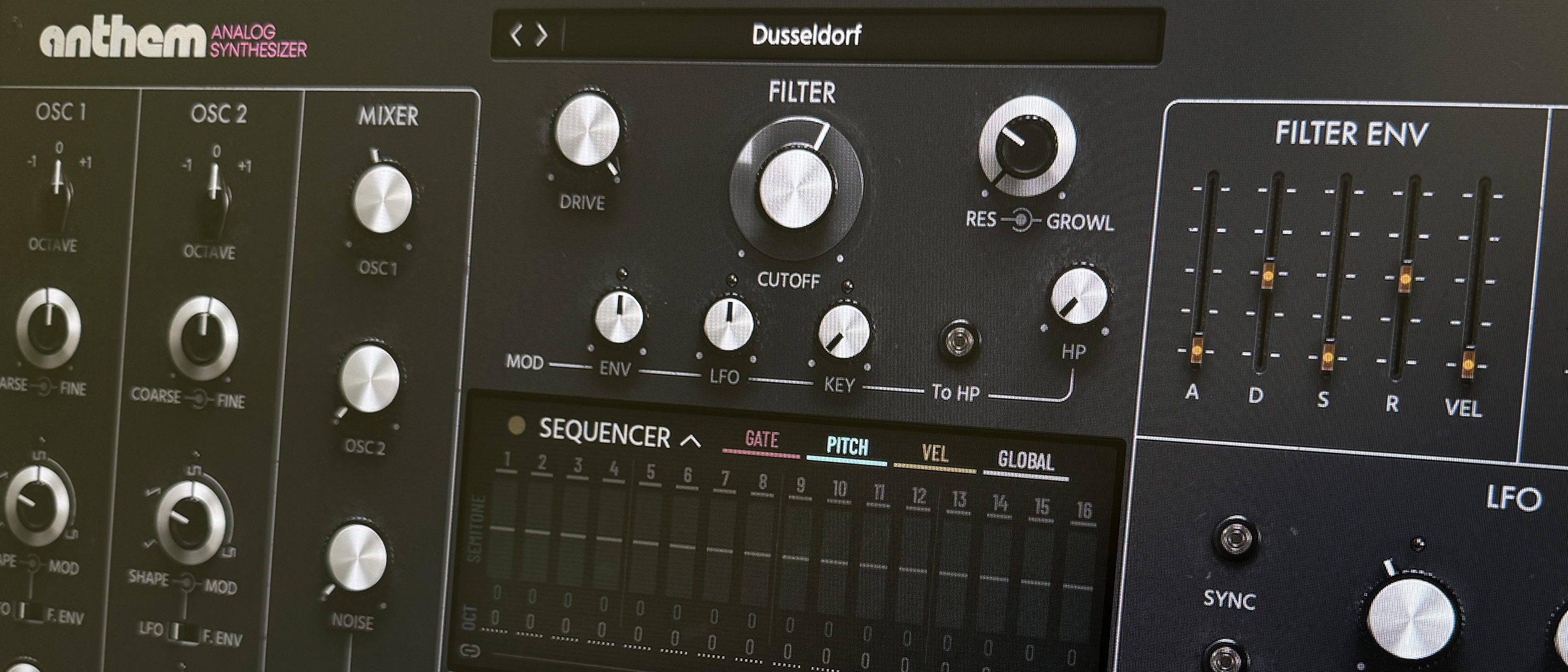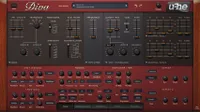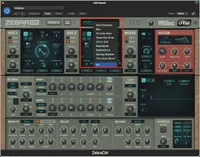MusicRadar Verdict
Anthem is a great synth, of that there is no argument, but $199 for a synth that retreads the well-worn VA path is a high asking price. Spark subscribers will be roused and uplifted though.
Pros
- +
Great-sounding analogue modelled synth.
- +
Easy modulation and overall use.
- +
Nice, crunchy effects.
Cons
- -
Expensive.
- -
You will probably already own a VA in some form or other.
MusicRadar's got your back
What is it?
Universal Audio makes plugins that deliver quality results rather than a huge list of extras. Witness the company's vast range of vintage recreations that focus on the character and nuances of the original gear, without perhaps adding too many other embellishments. Quality over quantity, you might say.
Anthem follows a similar trajectory in that it does classic analogue synthesis very well indeed, but that is pretty much it. However, contrary to many UA plugs, it's not following the lead (or bass) of any particularly iconic piece of hardware. Indeed, according to UA, Anthem purports to be “something entirely new”, so let's see if it's as rousing and uplifting as its name suggests.
What is Anthem?
Anthem is a dual oscillator synth, with those two oscillators able to morph between fairly standard waveshapes. As well as additional sub and noise options, you also get an analogue-modelled low-pass filter, lo-fi vintage effects, a step sequencer, plus two envelopes and an LFO. The plugin clearly focuses on the classic analogue signal path, so it will be as familiar to old synth hands as it will be educational to new ones.
Anthem is also a $199 native plugin, so anyone can use it – unlike those tied to UA hardware – and is also available as part of UA's Spark subscription, a collection of over 40 of the company's finest native plugins starting at $19.99 a month.
The synth boasts three different main modes of operation: Mono for big fat basses and leads, Unison for even fatter sounds, and Paraphonic, which effectively gives you four voices of polyphony (which share much of the signal path). Interestingly, that is the synth's limit – although you can obviously stack multiple instances across different tracks to up that note count if you wish. Again, this follows the UA philosophy: do fewer things but do them best; it might be restrictive in this case, but when it comes to the sound, we kinda get where Anthem is heading.
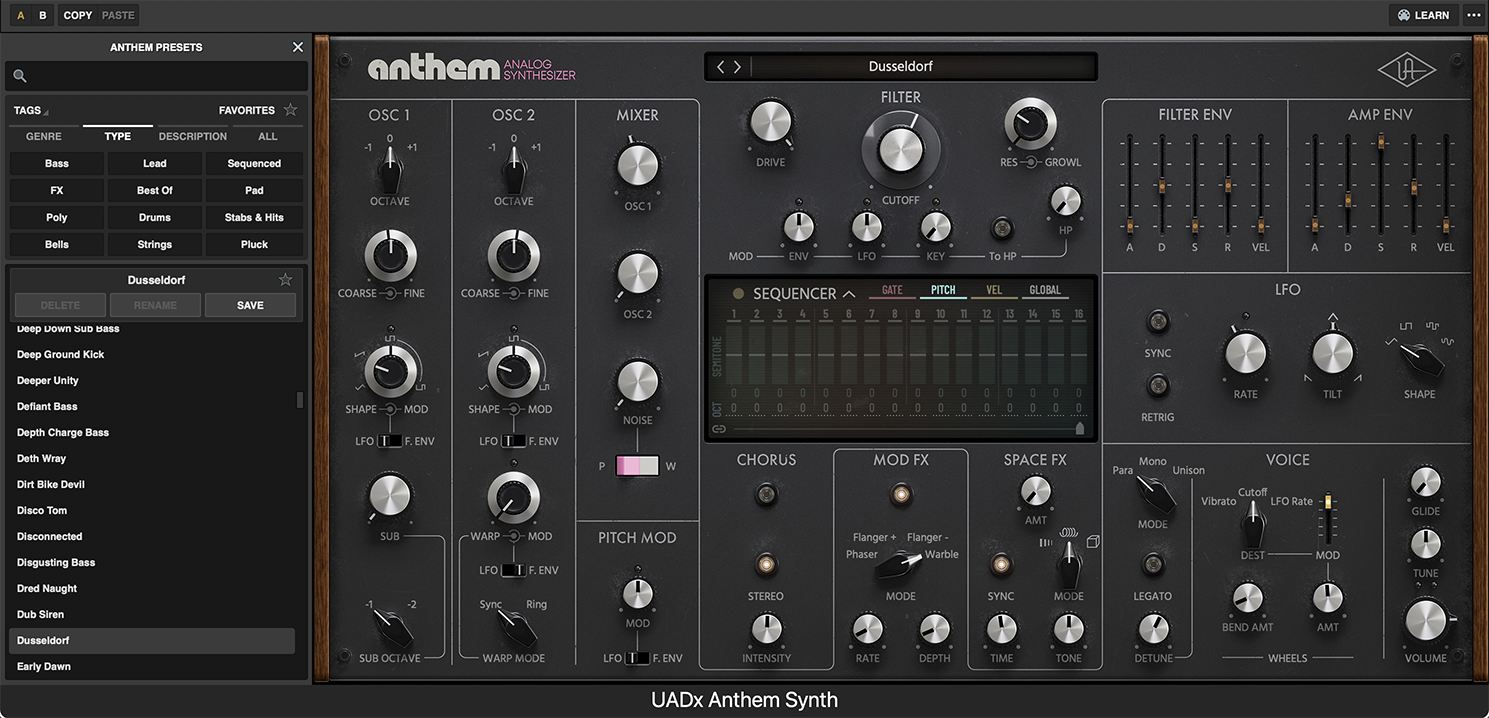
Performance
Its (by our count) 250+ presets reveal all, with 12 categories allowing you to home in on bass, leads, drums, strings and more. There are, of course, many vintage sounds, with fat basses and mix-ripping leads all prominent, but also plenty of effects, chip tune options, bells, and, yes, whistles. More surprising are the pads – many and varied despite a lack of polyphony – while the many sequences all utilise the on-board 3-track, 16-step sequencer to great effect.
What you'll conclude is that there is a huge variety of timbres within the confines of the architecture, and they are pretty much all of a great quality and suited to more genres than you might expect. That quality is helped by the vintage effects, which actually help add a modern sheen, occasionally lovely and gnarly and brash, often atmospheric and always dramatic. We particularly like using the mod effects to introduce subtle and not-so-subtle timbre movements, and the Space FX block certainly adds some creaminess to the synth, giving it that nice, warm analogue feel.
Want all the hottest music and gear news, reviews, deals, features and more, direct to your inbox? Sign up here.
The sequencer is a great addition for expanding the sonic palette with movement and melody. It has four main tabs that cover gate, velocity and pitch changes – easily drawn in up to 16 steps – plus a global option for adjusting rate, swing, scale and direction.
Finally, on the programming side, a straightforward modulation setup allows you to alter the wave shape, pitch, warp, and filter cutoff with the LFO or filter envelope. It's a little basic but very easy to implement, as is pretty much everything on Anthem. And on this, we particularly like the double-use aspect of some of the controls, allowing you to, for example, adjust the coarse tune with the inner dial and fine with the outer.
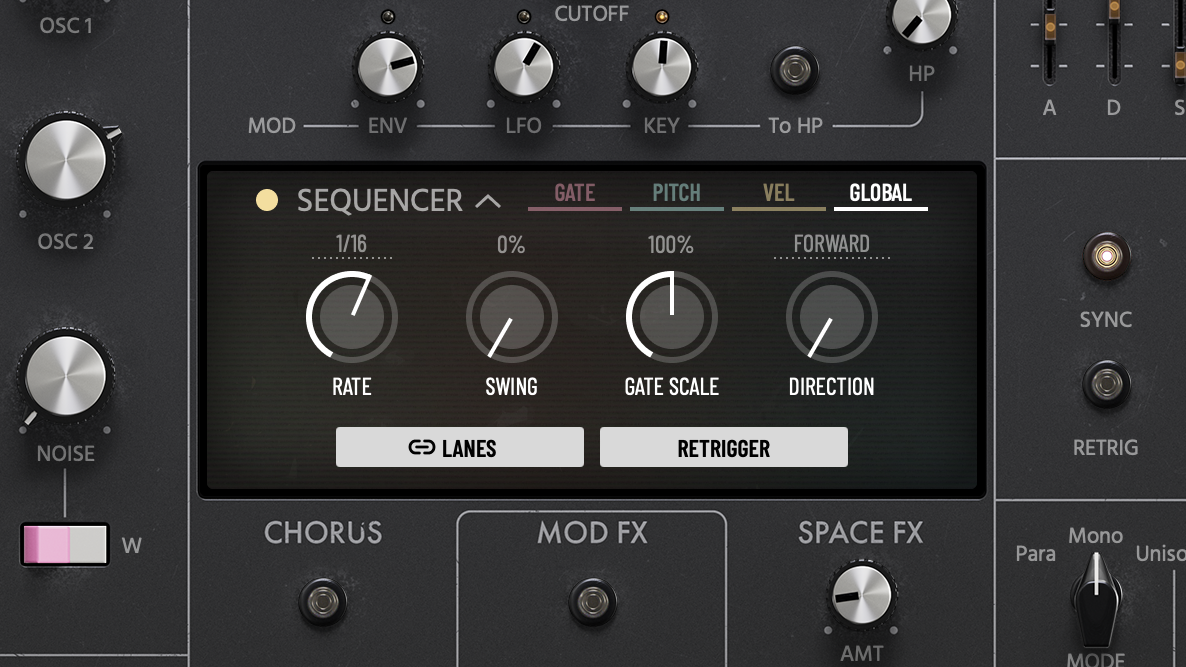
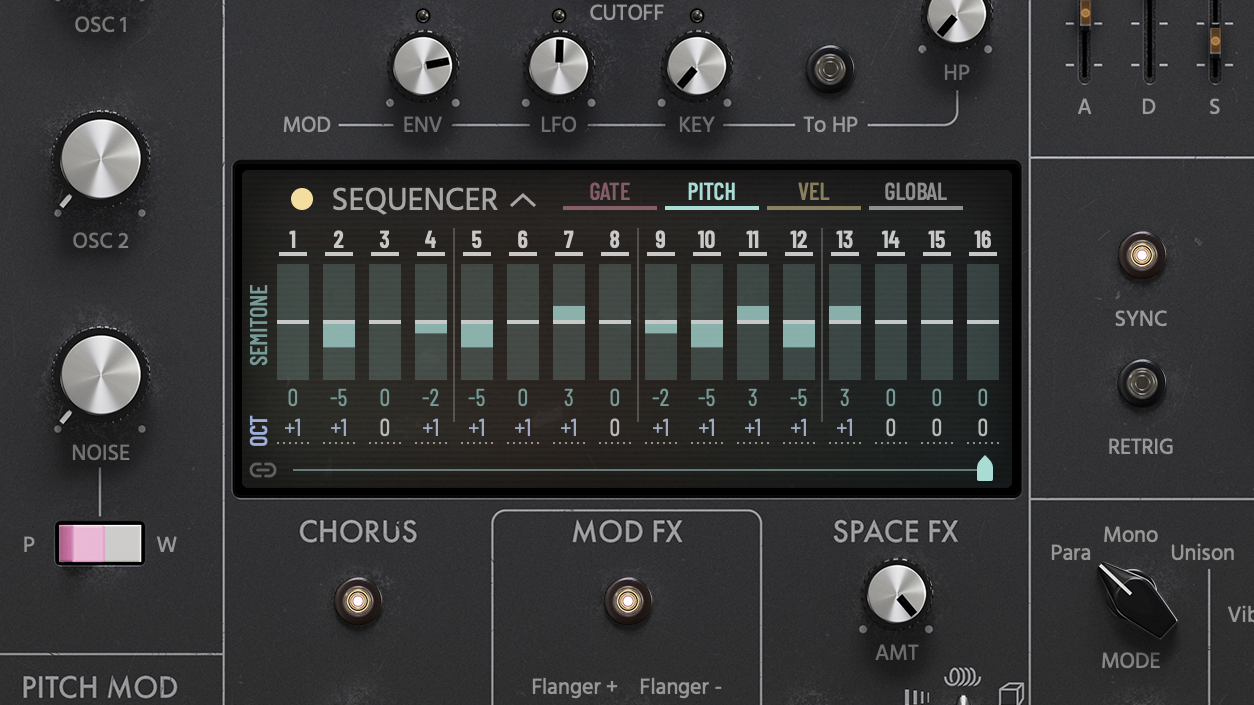
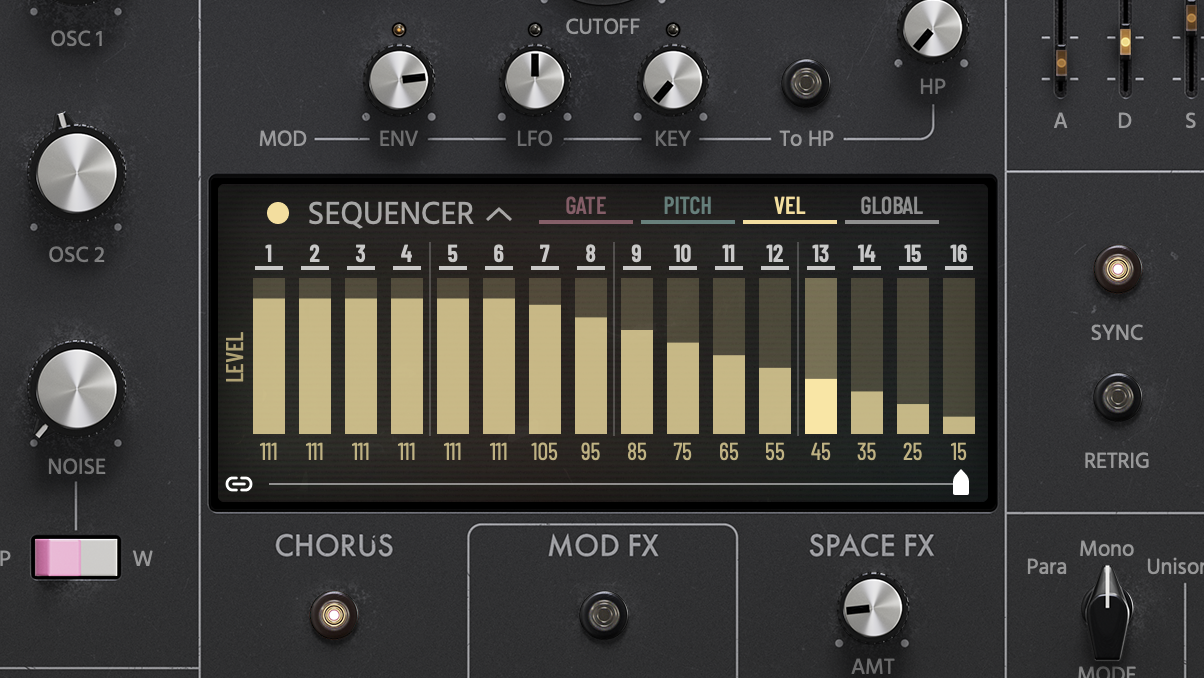
Verdict
With UA, you can expect any plugin newcomers to deliver top-notch sound quality, and Anthem does indeed drop the goods off with some aplomb. It's easy to use, with the modulation and sequencer being highlights, and it sounds, well, like a top-quality analogue synth. In this respect, it makes a Spark subscription even more of a tempter, as it joins an increasingly impressive synth lineup including PolyMax, Opal Morphing Synthesizer and Moog Minimoog.
However, with some of these instruments already boasting impressive analogue credentials, you have to wonder whether there is much room for another pretender. That all said, as Spark subscribers, we're dead chuffed to welcome Anthem into our drive space; we're just not sure if it would have been the draw that led to the sub in the first place.
Its asking price certainly makes that Spark sub look like more of a bargain
Outside of a Spark subscription, Anthem's one-time purchase price of $199 (intro offer of $149) puts it up there in the premier league of synths cash wise, and right in the fray with u-he's Diva, widely regarded as something of a – if not the – must-have 'analogue' synth plugin. Also, lest we forget, many DAWs come with synth plugins that attempt the analogue signal path – it was the first style to be modelled in software, after all.
All of this points to Anthem being an expensive addition to your studio and perhaps one surplus to requirements. However, it does do its vintage thing incredibly well, with both its sequencer and effects able to steer sounds into wide extremes within that analogue theatre. Its asking price certainly makes that Spark sub look like more of a bargain – perhaps that was UA's thinking all along – but as a single purchase, you might find freebies in your DAW or elsewhere that pack enough of its analogue punch.
So Anthem is a great synth, of that there is no argument, but $199 for a synth that retreads the well-worn VA path is a high asking price. Spark subscribers will be roused and uplifted, though.
Hands-on demos
Universal Audio
Alternatives
It's been around for so long that Diva feels like a classic synth in its own right, but it's still the VA to beat.
Read the full u-he Diva review
Probably the best free synth from our now sadly departed – but not forgotten – Computer Music magazine, Zebra CM is still available to download and boasts many analogue-style features and sounds… for free.
Read more about u-he Zebra CM
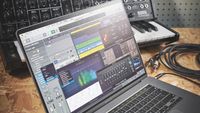
Most DAWs ship with analogue-style synths. Think Alchemy in Logic or Analog in Live and you won't stray too far from 'that' signal path.
Specifications
Price | $199 |
Key features | Two modelled analogue-style oscillators waveform morphing (triangle, saw, square, pulse), sub-oscillator, noise generator Modelled analogue low pass filter with drive (saturation) Lo-fi effects including chorus, modulation and spring reverb Step sequencer with 3 tracks (gate, pitch, velocity), 16 steps plus polyrhythms, accents, and generative textures; Modulation: 2 ADSR with velocity, 1 syncable morphable LFO |
System Requirements
| Runs natively for Mac and PC in VST3, AU, and AAX formats. Requires macOS Catalina 10.15, Big Sur 11, Monterey 12, Ventura 13, Sonoma 14, Sequoia 15 or Windows 10 or Windows 11 (64-bit editions) Intel, AMD or Apple silicon processor Internet connection to download UAD Connect and authorize native UAD plugins and an iLok account (iLok USB 2nd generation or higher) |
Contact |
Andy has been writing about music production and technology for 30 years having started out on Music Technology magazine back in 1992. He has edited the magazines Future Music, Keyboard Review, MusicTech and Computer Music, which he helped launch back in 1998. He owns way too many synthesizers.
You must confirm your public display name before commenting
Please logout and then login again, you will then be prompted to enter your display name.
